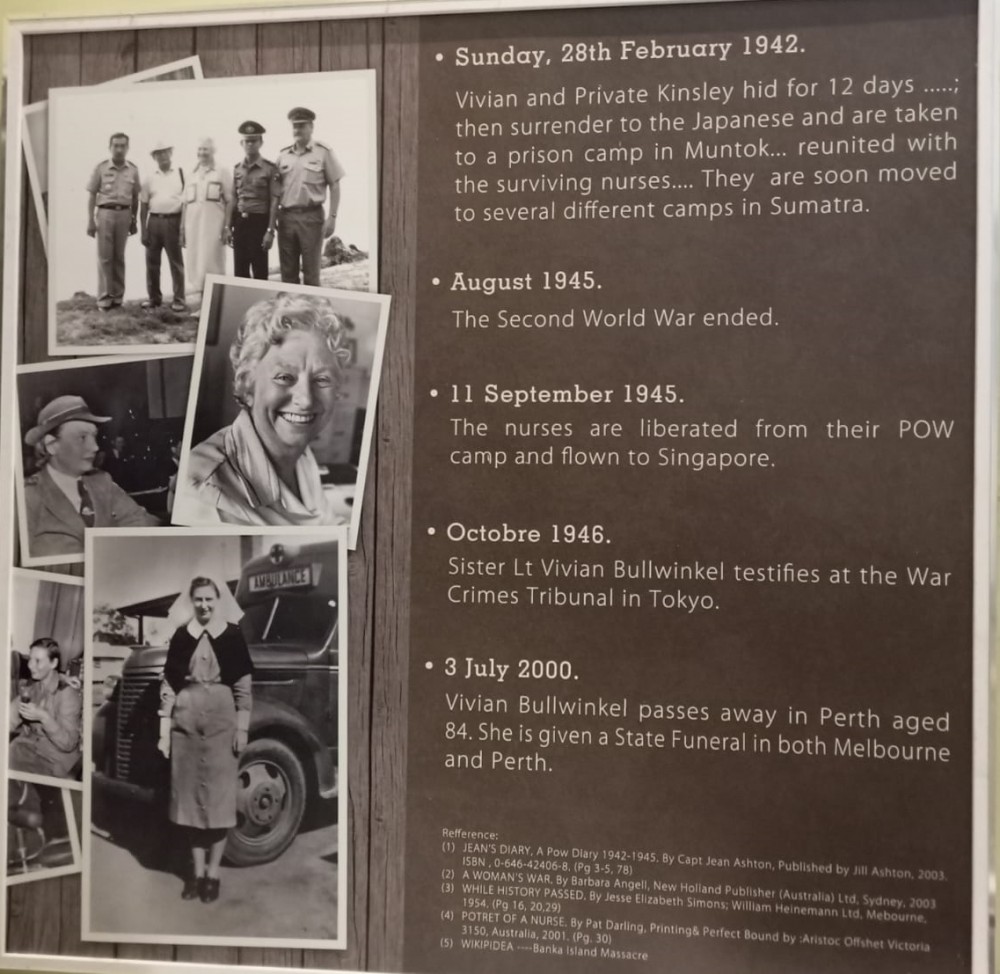
BANGKA BARAT - A visit to Muntok City, West Bangka Regency is incomplete if you don't visit the Muntok Indonesian Tin Museum (MTI).
Besides knowing the history of tin, MTI Muntok also has a gallery about World War II. Where Radji Beach in Muntok, West Bangka is one of the historical places in the story of World War II.
This World War II gallery at the Muntok Museum tells the story of the events of February 16, 1942. At that time, a terrifying incident occurred due to a lightning attack from the Japanese army which managed to sink the allied ship Vyner Brooke which was about to flee to Australia.
The incident began with the fall of Singapore from Britain to the Japanese. As a result, thousands of British and Australian civilians, men, women, and children fled including British and Australian soldiers as well as nurses from the Australian Army.
But when they arrived in the Bangka Strait, they were attacked by the Japanese army. The survivors were stranded along Muntok beach.
A total of 21 nurses from the European-Australian army garrison were killed in the tragedy of World War II.
Vivian Bullwinkel is one of the surviving nurses. He along with several other ship passengers were caught and taken to Palembang.
Vivian Bullwinkel is one of the Australian nurses who survived. He told the witness of the history of the second world war that occurred on the beach of Radji Muntok.
Intrigued by Vivian Bullwinkel's story in full, you can visit the Muntok Indonesian Tin Museum. Whereat MTI is located in the World War 2 Gallery on the ground floor of the Timah Muntok Museum.
"The World War II Galleries are one of the attractions for the Museum. Many tourists from both local and foreign countries visit Bangka Baarat. They simply see the Gallery and know the history through the Panels, Books, and Plaques at MTI," explained the Head of the Timah Museum. Muntok Fakhrizal.
Not only knowing the history, when visiting this gallery you can also see historical objects related to this event.
"This historical story was told directly by a witness who survived the massacre by the Japanese army. At that time Sister was rescued by local residents, before she pretended to be dead," said Fakhrizal.
Fakhiral said that this gallery was an MTI initiative and received support from the family organizations of the victims of World War II who were members of the Malayan Volunteer Group (MVG).
Even MVG provides some historical objects such as plaques, and history books of World War II to become the Museum's collection.
In the Gallery, there is also war equipment along with the Japanese flag, placards, military drinking bottles, World War II books, and mannequins (a statue of Australian nurse Vivian Bullwinkel).
"This was given by Judi Balcombe, and Adnthony Pratt, Mrs. Margaret Caldicot, the Ashton Family hat, the Malayan Volunteer Group (MVG) is a family organization for the victims of World War II," said Fakhrizal.
Meanwhile, the story about the Radji Beach Tragedy was written based on Vivian Bullwinkel's description written on the Panel in the corner of the World War II War Gallery.
Written in front of the gallery the contents of the Gallery are:
Books; While History Passed, Jessie Elizabeth Simons, 1954, Silk Bells Off Java, and Eastern Windows, William H. McDougaillJr, 1983, Song Of Survival, Hellen Colijin, 1996, Women Beyond The Wire, Lavina Warner, and John Sandiland 1988, Betsy S Story, Betsy A Landzaad 1997, A Woman's War Barbara Angel 2003, Jeans Diary A Pow Diary 1942,-1945, Jean Asthon 2003, On Radji Beach, Ian Winton Shaw 2010, Waiting For The Durian, Susan J McCabe 2010.
Contributors Muhamad Rizki, Judy Balcombe, Mr. Anthony Pratt, Mrs. Margareth Caldicot, Ashton Family.
This event is also often commemorated by the State of Australia every year. Where every February the Australian Ambassador and the families of the victims of this incident often make pilgrimages and carry out a procession of respect by visiting Radji Beach.
Australian Embassy Penny Williams, recently when commemorating the Radji Beach Tragedy on Tuesday (15/2/2022) said the commemoration of the tragedy was very important for Australia.
"This Tragedy Memorial is very important for Australia because 80 years ago, 22 nurses, 21 of them were killed here and this is important land for Australia. We highlight the role of women in the history of Australia and Indonesia," he explained. (**)